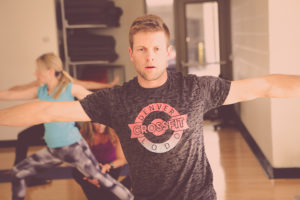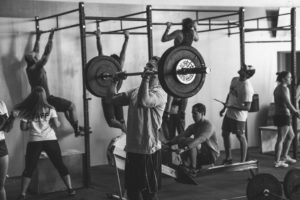
Ryan has owned CrossFit Lodo for almost five years. His experience as a competitive athlete provides him a unique perspective that guides the gym operation, the structure of classes, and the culture. He’s a self-described “Fitness Hippie” and takes a zen approach to managing the gym and its members.
“I know what it was like to be a serious athlete—how hard it was—and it was all on me. It’s up to the athlete to put in the work. They are going to improve; I’m just here to support and guide, not force them into participating in a certain way.”
“There’s no specific way to be happy, healthy, and fit. There are guidelines, but everyone’s approach is unique to the demands of their lives.”
CrossFit Lodo has eight coaches, three of which are full-time. He shares his coaching intuition and experience through an internship program for new coaches. The internship is a 26-hour curriculum and structured in a way that accelerates learning—covering nutrition, class structure, the psychology of sport, and coaching philosophy, “We’re not a bunch of fire breathers, we have good athletes and are competitive with one another, but our focus is on fun. We want our athletes to feel good, so we focus on positive feedback instead of negative.”
CrossFit Lodo supports over 300 athletes with two facilities. They have a primary location where they hold most of their classes and a second location that is better suited to movements that require high ceilings, like muscle ups and rope climbs.
Their gym programming centers around a daily WOD. They don’t have many specialty programs but instead, partner with the Denver Barbell Club to provide an opportunity for athletes to do barbell training and Oly work. Members can sign up for a membership at both gyms. Similar to SugarWOD’s philosophy, Ryan leverages and partners with businesses who are specialists in other areas, to provide the highest level of value to his athletes.

Lodo has been a SugarWOD customer for about two years. Before using SugarWOD Ryan and a friend of his built a tracking system called SuperWOD. He noticed that there were longtime athletes in class that had no idea what their numbers were and wanted to create an easy method for workout tracking. After playing the role of gym owner and software developer, he stumbled on SugarWOD and decided to replace SuperWOD with SugarWOD.
“SugarWOD makes CrossFit an easier sell. Our impact is the ability to show athletes snapshots of their fitness progress and improvements over time. The only way you can do that is with workout tracking.”
They use SugarWOD to push the WOD to their athletes, track progress, and post announcements. With a central system like SugarWOD, it allows Ryan to give his athletes credit and connect with them, even if he didn’t coach the athlete that day.
“The cool part is, there’s the ability to connect athletes in a way they couldn’t have connected before and breeds the healthy competitiveness between classes and within classes.”